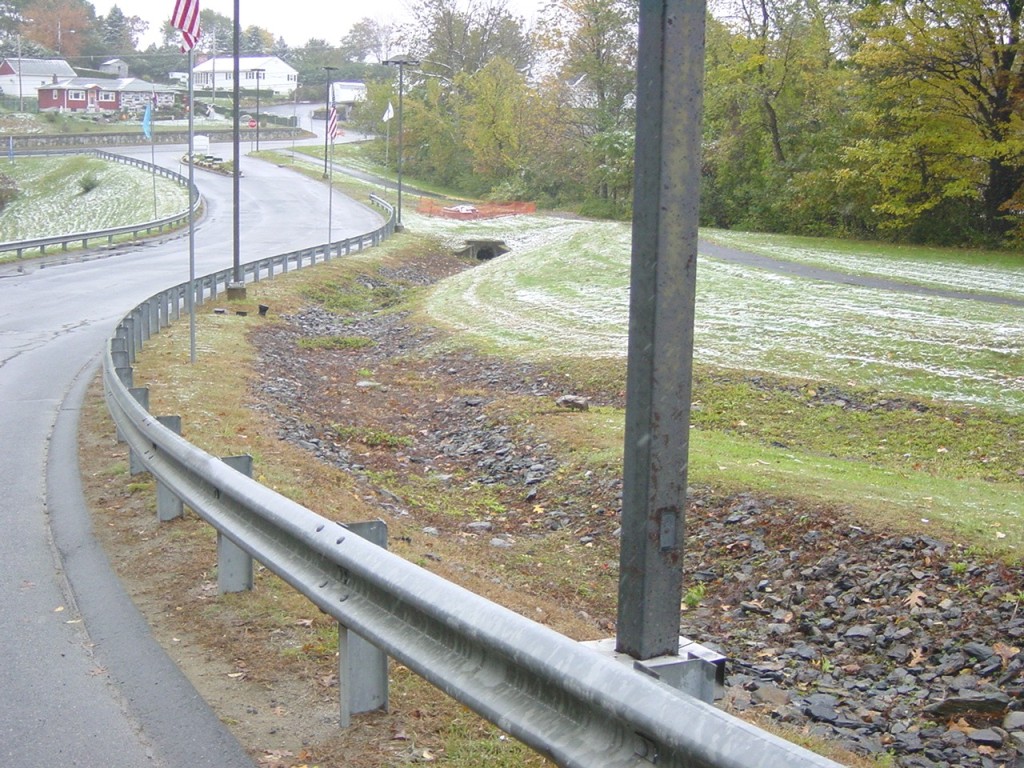Conventional Drainage Channel

Description
Channel systems include open channels in two general categories, (1) Conventional drainage channels and (2) water quality swales. Conventional drainage channels with non-erosive surfaces are designed primarily for
storm water conveyance. Conventional drainage channels tend to provide very little or water quality treatment, and for this reason are less desirable than water quality swales.
|
Design Parameter
|
Criteria
|
|
Contributing Drainage Area
|
No size limit on contributing area, but size may be limited by velocity criteria applicable to the channel.
|
|
Storm frequency for DEP TSS removal credit
|
Minimum design storm = 2-year frequency
|
|
Conveyance Capacity
|
Refer to highway drainage design manual for design storm frequency to meet capacity criteria.
|
|
Maximum permissible velocity
|
Maximum velocity for stability of a channel depends on its lining. Vegetated channel stability depends on soils type and grass species. The permissible velocity in a grassed channel can be increased through the use of geosynthetic materials, also known as Turf Reinforcement Materials (TRMs). Channels may also be lined with riprap or with fabricated revetment systems, such as interlocking concrete block revetments. Consult design literature for further guidance on channel linings.
|
|
Maximum longitudinal gradient
|
Depends on lining and anticipated velocities. Grassed waterways (without use of TRMs) are generally prone to excessive erosion when their gradients exceed 5%.
|
|
Check Dams
|
Refer to separate design criteria listing for Check Dams (Design Criteria for Supplemental Structures and Devices).
|
|
Stabilization
|
For vegetated channels, seed in accordance with NRCS standards; species tolerant to frequent inundation are required. Erosion control blankets recommended during establishment of vegetation.
Consult design literature for reinforcement using TRMs.
Consult design literature for stabilization using “bio-engineering” methods.
For lined channels, consult technical literature for design of riprap or synthetic revetments.
|
|
Outlet protection
|
Scour protection required at discharge point, unless channel discharges directly to a conduit or a properly lined channel.
|